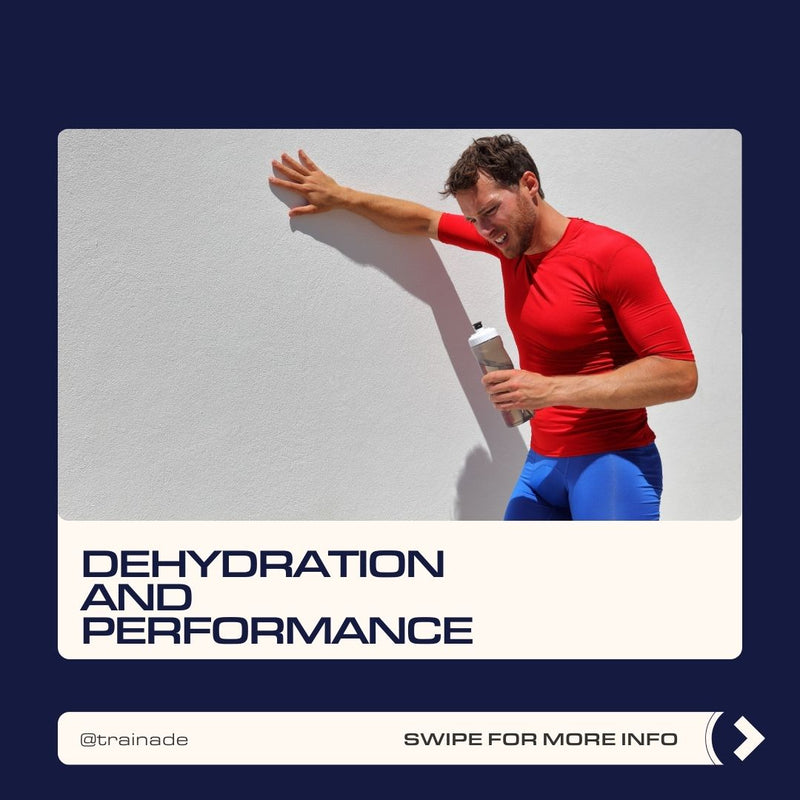Making sure that you are drinking enough fluid to replace the sweat you have lost during training can be surprisingly difficult, with only half of sweat loss generally being replaced during exercise [1].
This can lead to mild states of dehydration which can cause impaired cognitive function, alertness, and physical performance. What this means in practical terms is slower running times, slower reaction times, and slower sprint speeds.
Because of this, understanding how much we sweat during training is vital to being able to give ourselves a hydration plan.
Methods to calculate sweat loss
There are 3 methods that we can use in order to calculate our own sweat rates.
The first way to understand how much we sweat is to look at the average sweat rates for our sport. This can give us a good starting point; however, it should be mentioned that every individual will sweat at different rates and therefore these sweat rates will likely not be accurate for you.
Here is a list of average sweat rates in different competitive sports
|
Sports |
Sweat Rate (L/hr) (Mean +- Range |
Sodium per litre of sweat |
|
American Football [2] |
1.51 ± 0.70 |
36.2 ± 11.4 |
|
Endurance [2] |
1.28 ± 0.57 |
39.9 ± 9.8 |
|
Basketball [2] |
0.95 ± 0.42 |
35.4 ± 11.2 |
|
Soccer [2] |
0.94 ± 0.38 |
36.1 ± 11.9 |
|
Baseball [2] |
0.83 ± 0.34 |
33.0 ± 9.9 |
|
CrossFit [3] |
1.59 ± 0.34 |
N/A |
|
Netball [4] |
0.98 ± 0.35 |
N/A |
|
Squash [4] |
2.37 ± 1.0 |
N/A |
|
Tennis [4] |
1.60 ± 0.95 |
N/A |
|
Water Polo [4] |
0.29 ± 0.08 |
N/A |
If you want to find out exactly how much you sweat during different activities, you can calculate your own sweat rate by weighing yourself before and after training and looking at the difference minus any fluid that you have drunk. From there, you can convert this into litres per hour.
(sweating rate = pre-exercise body weight - post-exercise body weight + fluid intake - urine volume/exercise time in hours)
This is a very useful way to calculate your sweat rate and is the method we would recommend, however, one limitation to this is that you will not be able to calculate how much sodium and other electrolytes are being lost.
The current gold standard is to take a professional sweat test which will identify how much you sweat as well as how salty your sweat is.
If you would like to identify if you are a salty sweater or not without taking a professional test, wear a black shirt or cap and look for salt rings after training. If there is salt on your shirt, you are likely a salty sweater. Another method is to try using Gatorade patches which can tell you roughly how salty your sweat is.
What should we do when we know our sweat rate
Knowing your sweat rate is a great way to ensure that you stay hydrated during training. Once you know your sweat rate, you should aim to replace as much of the sweat lost during training as you can. If you do not have an opportunity to replace the fluid during training, you can drink 1.5x the amount lost during training over the next few hours.
It is important to note that you should also try and replace the electrolytes lost in your sweat as well. Consider using an electrolyte supplement during training or after training.
References
[1] 10.3390/sports5020028
[2] 10.1080/02640414.2019.1633159
[3] 10.5923/j.sports.20211102.01
[4] 10.1002/cphy.c100082




